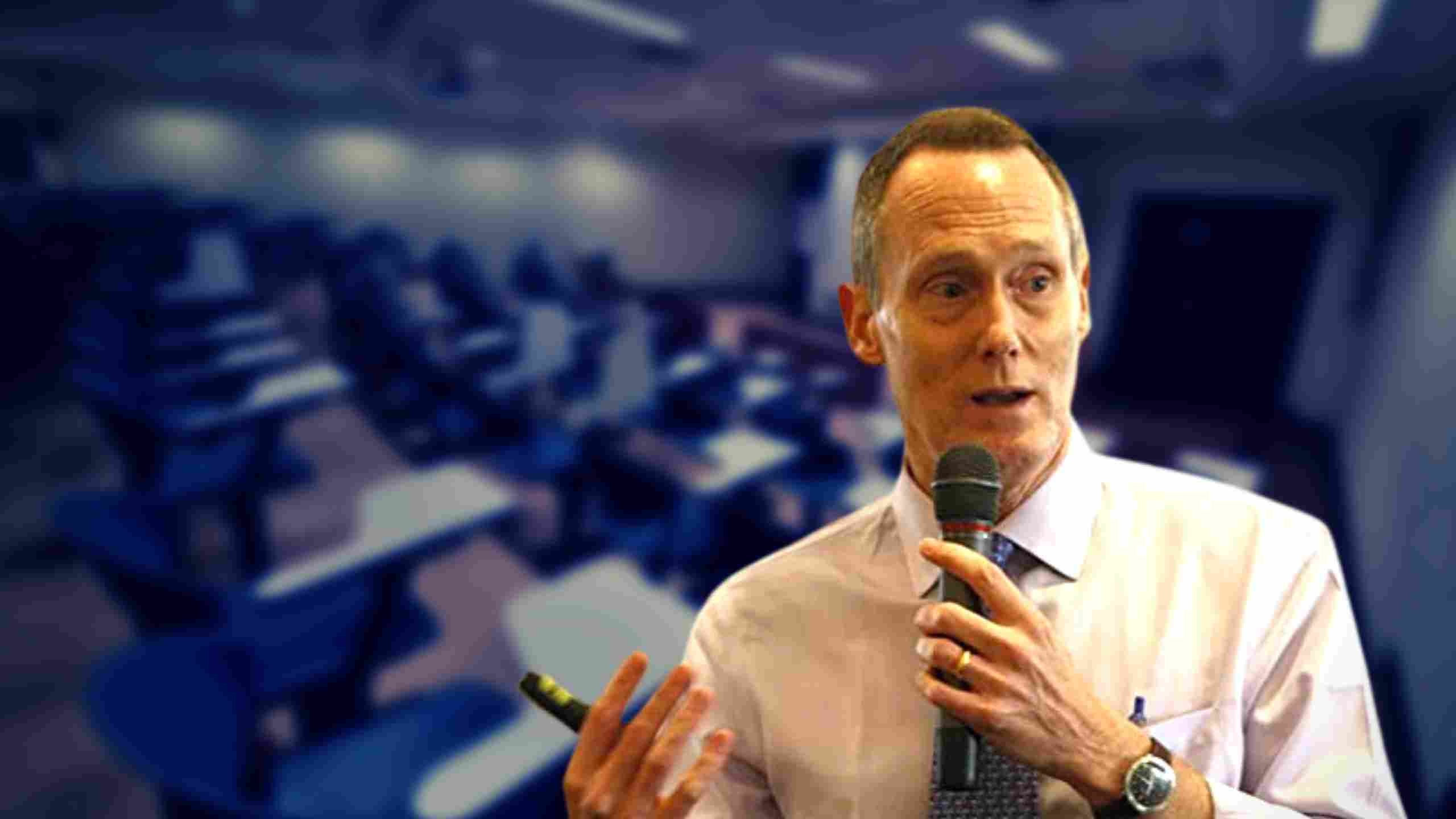I’d pick The Phoenix Project if I could only recommend one book to a CEO, CFO, or COO about the essentials or the heart of IT in a heartbeat. Gene Kim is one of the co-authors of this remarkable book. In this conversation with Gene, we address The Three Ways, the four types of work, internal audit, the role of IT security, and why this novel has universal appeal across all industries and all professions.
Interview Highlights
- Gene’s origin story and if he knows the fictional characters in The Phoenix Project
- A book for project managers of any kind
- Short definition of DevOps
- Bill Palmer and a company with far too much drama to overcome, but they do so with the sage advice of Erik
- The reason all IT professionals should have an Erik in their professional lives
- Getting vulnerable and the role of trust in an environment free of silos
- The Three Ways – flow, feedback loops, and continuous learning
- The need for experimentation in smaller organizations
- The Four Types of Work and bucketing projects
- Technical debt
- Scoping error is not scope creep
- Internal audit and the COSO cube
- The order in which to read the rest of Gene’s books
- Wiring The Winning Organization
- What is IT Revolution?
- The reason Gene is rereading Command in War
In a fast-paced and entertaining style, three luminaries of the DevOps movement deliver a story that anyone who works in IT will recognize. Readers will not only learn how to improve their IT organizations, they'll never view IT the same way again.
Favorite Lines in the Book
Steve is the fictional CEO in this story, and he has a great comment about what he expects (or doesn’t expect) from IT:
I use the toilet and, hell, I don’t ever worry about it not working. What I don’t want is to have the toilets back up and flood the entire building.
Steve Masters, page 20
Near the end of the book, Steve believes every aspect of IT should permeate the entire organization and not just through infrastructure and code:
You’ve helped me see that IT is not merely a department. Instead, it’s pervasive, like electricity. It’s a skill, like being able to read or do math. In ten years, I’m certain every COO worth their salt will have come from IT. Any COO who doesn’t intimately understand the IT systems that actually run the business is just an empty suit, relying on someone else to do their job.
Steve Masters, pages 320-322
If I could point to one line that gets to the heart of this book’s primary message, it would be this one:
A dysfunctional marriage assumes that the business and IT are two separate entities. IT should either be embedded into business operations or into the business. Voilà! There you go. No tension. No marriage, and maybe no IT Department, either.
Erik, page 395
Other Great Lines
- I always liked that phrase in Saving Private Ryan: “There’s a chain of command: gripes go up, not down.” Page 63
- Although each movement started in different places, they all agree on one thing: WIP is the silent killer. Therefore, one of the most critical mechanisms in the management of any plant is job and materials release. Without it, you can’t control WIP. Page 101
- Any improvement made after the bottleneck is useless because it will always remain starved, waiting for work from the bottleneck. And any improvements made before the bottleneck merely results in more inventory piling up at the bottleneck.” Page 103
- Remember, outcomes are what matter—not the process, not controls, or, for that matter, what work you complete. Page 192
- Stop focusing on the deployment target rate. Business agility is not just about raw speed. It’s about how good you are at detecting and responding to changes in the market and being able to take larger and more calculated risks. It’s about continual experimentation like Scott Cook did at Intuit, where they did over forty experiments during the peak tax filing season to figure out how to maximize customer conversion rates. During the peak tax filing season! Page 348
- I’ve long believed that effectively managing it is not only a critical competency but a significant predictor of company performance. Page 395
Should I Read or Listen to the Book?
You cannot go wrong either way. I first listened to the book soon after its release on Audible. I never wanted to stop listening to it during commutes. Similar to The Goal, some buried nuggets must be mined for additional study. That’s why I immediately read the Kindle version to capture those big ideas and take notes on some secondary or peripheral vital points (a perfect example is the COSO Cube).
I’ve recommended this book to dozens and dozens of peers. There’s about a 50/50 split on the way the book was consumed. In short, pick the way you prefer to consume books because you can’t go wrong whether you listen to or read it. Or do what I did, do both.
Book Club Ideas
The Phoenix Project is a great book to read in a book club setting. Below are a few of my notes to augment your discussions as your group reads the book.
The Four Types of Work
- Projects – do you agree with the comments made between Mark and Gene that projects are meant to either create, expand, fix, or maintain capacity?
- Internal IT Projects – what are the backstage or back-of-office internal projects in your organization that are necessary but are consuming too much time for projects that create customer value?
- Changes (for the first two types of work) – how much of this type occurs within the business value stream you work in? Why?
- Unplanned work – as you discuss this type of work in your organization, be mindful of Erik’s comment on page 257, “This should be your guiding principle: You win when you protect the organization without putting meaningless work into the IT system. And you win even more when you can take meaningless work out of the IT system.”
The Three Ways
Be prepared to explain how you use or plan to use The Threes Ways in your organization:
- Flow
- Feedback Loops
- Experimentation/Learning
Stress, Tension, and Turmoil
I found Bill’s story relatable. While Murphy was alive and well inside the walls of Parts Unlimited, I saw none of the catastrophes as unrealistic. Be prepared to explain how you would have handled each of the issues had they happened in your company:
- the credit card debacle at the store locations
- the major payroll glitch
- customers not getting invoiced
- Sarah’s attempt to pull Wes into her project
- the risk of being outsourced
- Bill’s resignation
The issues above seemed to make the Phoenix implement pale compared to those. That’s not the case. Talk about the work required before any major software implementation is undertaken instead of addressing what you would have done with the Phoenix project had you been in Bill’s shoes.
Terms to Discuss
- Technical Debt (page 225) – what is it, and can you identify the technical debt in your organization? As you answer this question, consider the comment on page 226, “Unplanned work has another side effect. When you spend all your time firefighting, there’s little time or energy left for planning. When all you do is react, there’s not enough time to do hard mental work of figuring out whether you can accept new work.”
- Scoping Error (page 258) – Erik accused John as the QA manager of “writing millions of new tests for a product we don’t even ship anymore and then files millions of bug reports for features that no longer exist.” What is the close analogy of scoping error in your business?
- Kata (page 247) – why did Erik like this term?
- COSO Cube (page 295) – be prepared to do independent research on this framework before discussing it with the other readers.
- Slack or idle time (page 275) – why does Patty say everyone needs slack or idle time? Does this go against the intuition of staying busy all of the time?
Important Links
- IT Revolution
- The Idealcast with Gene Kim
- Gene’s Amazon Author page
- A DevOps bookshelf
- Gene Kim’s social media profiles on LinkedIn and Twitter
To learn more about the COSO Cube, start here on this blog post by Gene Kim and scroll past the halfway mark of this post. Be careful if you decide to read the entire post if you have not read the book yet. There are spoilers.
When Gene slipped in the comment about Gates and his message to staff members about prioritizing security over features, I just had to look it up:
“When we face a choice between adding features and resolving security issues, we need to choose security,” Gates wrote in the e-mail, a copy of which was forwarded to CNET News.com. “Our products should emphasize security right out of the box.”
Gates: Security is top priority, CNET, March 2, 2002
I took many notes as Gene talked about the CEOs working in organizations with material audit weaknesses and an IT component tied to them. He was referencing the excellent research of Dr. Vernon Richardson of the University of Arkansas. He co-authors the research paper IT Does Matter: The Folly of Ignoring IT Material Weaknesses. I’m hoping I can get a copy of this document that can be freely distributed to listeners of this show.
Gene mentioned Google’s Project Aristotle briefly as we were talking about Lencioni, trust, and getting vulnerable. Here is a link to this comprehensive research project.
Episode Pairings



A quick shoutout to Adrienne Fontaine for helping to make this interview possible. Thank you!


Leave a Reply